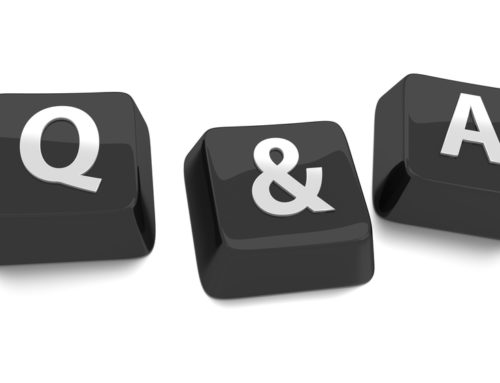By Mark Febbo with Jane Ryder and Morgana Gallaway
I am a DIY kinda guy, and to quote Lennon/McCartney, “I get by with a little help from my friends.” The “do it yourself” kind of projects I’m speaking of are primarily Jeeps, roofs, landscaping, rainwater harvesting and backyard chickens. Being the creative type, especially as an indie musician, has also put me in the company of artists who are looking for ways to DIY artistic projects. Working for The Editorial Department as an editor and helping out with TED’s social media efforts has given me further insight into the DIY world of publishing books. Although we help writers of every stripe, those who publish traditionally (some going on to become National Bestsellers) and with indie publishers, the self-publishing movement is continuing to grow and evolve, and we support that effort.
There is a great feeling of accomplishment when you do something yourself, whether that something be replacing the head gasket on a 34-year-old engine, recording a professional studio album of songs, or writing and publishing your own novel. With that said it’s easy to think, especially given the trendy nature of DIY arts projects these days, that going indie is all roses and no thorns. However, nothing could be further from the truth.
Sure, it sounds great. The common suppositions are that (1) you will have full creative control of your project (2) you will see a greater share of any potential profits (3) you will be beholden to no one but yourself for the success or failure of the project. On these three counts the suppositions are fairly accurate. The problems arise as the ideal outcome that is envisioned is slowly chewed on by the gremlins known as logistical problems, unforeseen occurrences, and reality.
The days of substantial author advances have gone the way of music industry advances. Neither publishers nor music labels are offering artists a way to feed themselves whilst they whittle away at a manuscript or studio recording over the course of a year or more. In the publishing industry, this means that even on the “traditional” pathway to publication, a lot more is expected of an author’s contribution to the end product than once was. Success these days for any author means that they’ve resigned themselves to the duties of self-promotion, and to finding a way to get work done without financial support from an industry beneficiary—blog on finding your own sugar daddy or mamma is forthcoming.
If a self publisher makes any significant amount of money these days, it’s usually through e-book sales. This means self-publishers need to find a balanced, genre-competitive retail price while keeping in mind the slightly higher cost-per-unit of POD, choose a POD printer with a discount level appropriate for their marketing strategy (Ingram Spark for brick-and-mortar retailer emphasis, CreateSpace for emphasis on online sales) and then calculate how many books must be sold before profits are seen. For most average length POD books, the author/publisher’s take home is $2-$3 per copy sold. All that said, self-publishing is still way better than traditional for the author, since traditional publishing usually nets something closer to 40 cents per copy sold to the author.
It’s important to realize that when you decide to become a self published author, you are deciding to be your own boss—to own your own business. And that means being the person who is responsible for the successes and failures of the business. If your end product ends up sitting on the virtual shelves in the virtual stores of the internet, and staying there, you will be more than virtually to blame. Planning, building, and executing social media campaigns and managing the various avenues available for networking in the publishing industry can be a full-time job in itself.
Managing your expectations is another area that all authors should consider, and self-publishing authors should especially think about practical goals and levels of achievement. If you are reading this and considering its implications on your own writing, it is not likely that you are J.K. Rowling or Stephen King, and even they were not immediately successful. Most successful authors went years or decades in complete obscurity, writing, re-writing, scrapping, and starting all over again. Most were rejected multiple times before finally finding an agent or publisher.
An author considering self-publishing should know that a self-published book is not likely to become a boon of income. Most self published authors do not sell well with the first book, and few ever see significant reward for the work they’ve done in terms of dollars. With this in mind, it is sage advice to write and self-publish not because you desire notoriety or monetary success, but because it is something you are driven to do as an artist. The only guaranteed payoff is that you will have pleased yourself through the act of creating something unique and releasing it into the world. All successful indie and self-published authors spend a great deal of time on marketing and building readership as well as writing. In this regard, if you are (1) a technophobe, (2) a determined luddite, (3) completely ignorant of the latest technology—post lithics and cuneiform—and you don’t have a handy relative who can help you with all that “computer and interwebs stuff,” self-publication is probably not for you.
Let’s say that you’ve done all of the above and you have self-published your first novel. Now all you have to do is sit around and wait for the dollars and public adoration to fall like a myriad of snowflakes from heaven, right? While this would be an ideal scenario, it’s also highly unlikely as many ideal scenarios are. As editor and author Beth Jusino is fond of saying, “the single best marketing tool you have is your next book.” Readers invest a lot of themselves when they read a book, and if they enjoy it they want to know there will be more like it. Let them know you’re also investing in the process, that you’re building a relationship with them. In short, if it’s your dream to scrap the day job and become a full time author, you may succeed at it provided you are able to satisfy the Holy Tenants of Author Success: (1) Write something people want to read (2) actively engage in marketing and promotion (3) hire a good cover designer (4) write another book people want to read, and (5) repeat as necessary.
The good news—and yes, we have saved the best for last—is that a growing number of clients who have published their own books are enjoying considerable success in terms of sales, profits, glowing reviews, and growing traction in the marketplace. It’s no surprise that the clients who are most successful on these fronts are the same ones who embraced the challenge to write the best book possible and take it all the way to the finish line before embarking on the publication process.
The lesson that’s been affirmed time and again from our perspective is that while there are no guarantees of monetary success in any path to publishing, publishing your own book can be a worthwhile and gratifying experience if you’re realistic about all that’s involved, if you plan your publication carefully and intelligently, and if you aspire to the highest standard possible at every turn.
Many of the writers you’ll meet in the indie author corner of our client showcase have done just that, and we would welcome your interest and support!






